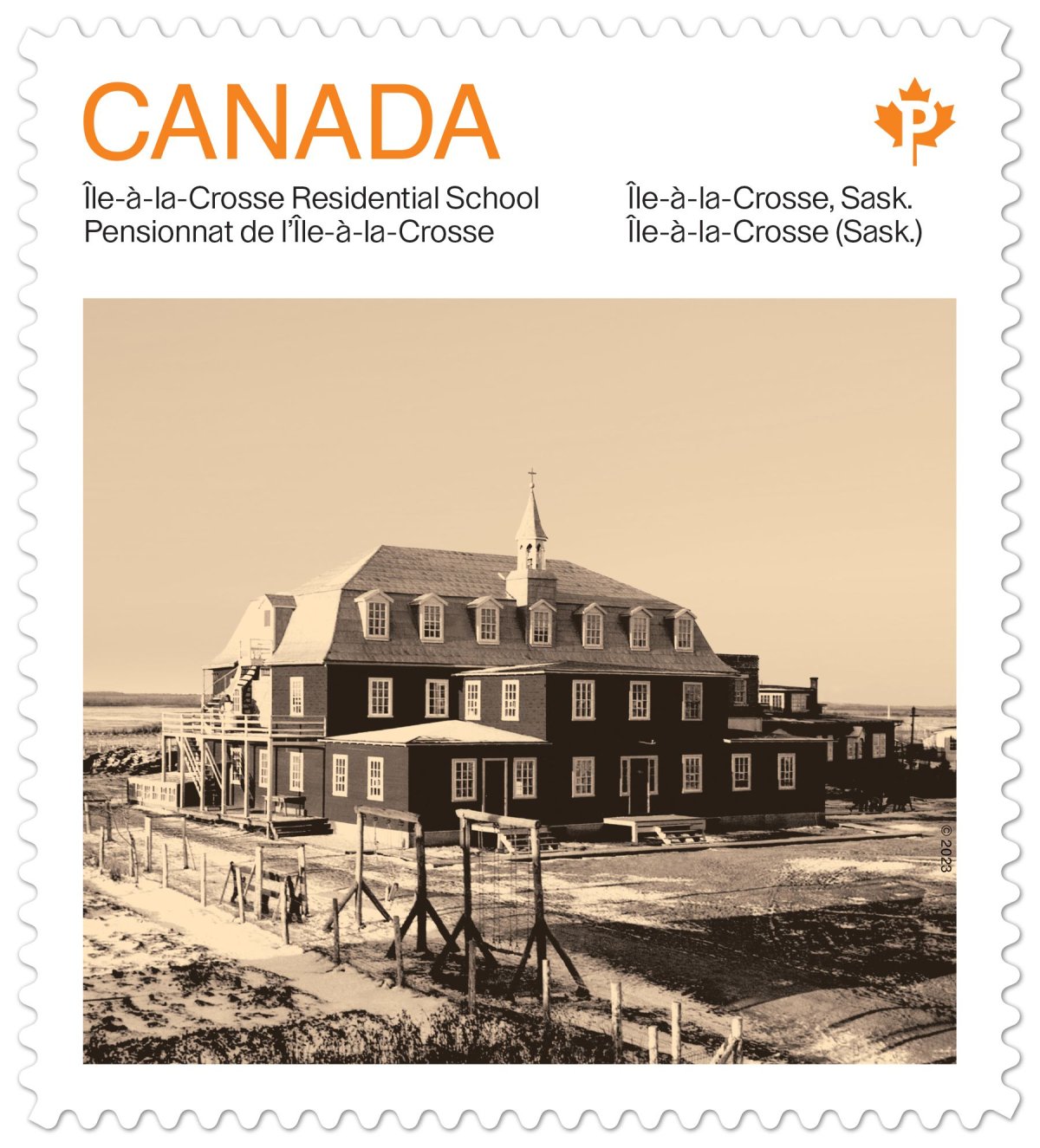To commemorate the National Day for Truth and Reconciliation, Canada Post released stamps featuring four Indian residential schools, including one from northern Saskatchewan. However, the move by Canada Post has been the only national recognition the school has received so far.

“The recognition by Canada Post that Île-à-la-Crosse was a residential school … there’s also some misgivings because the school hasn’t formally been recognized, acknowledged, the survivors have not been compensated,” said Métis Nation—Saskatchewan (MN-S) Vice-President Michelle LeClair. “So, it’s sort of mixed feelings around that.”
The Île-à-la-Crosse Residential School was one of Canada’s oldest residential schools and opened in the mid-1800s. It was designated for Métis students, but many First Nations kids also attended. Hundreds of students attended the Île-à-la-Crosse Residential School, which closed in the 1970s.

In 2008, the then-prime minister Stephen Harper formally apologized for the government’s part in Indian residential schools. Many schools were formally recognized by Canada throughout the era of reconciliation, but Île-à-la-Crosse Residential School was not one of them.
As Canada Post recognizes Île-à-la-Crosse Residential School in its second issue of the annual Truth and Reconciliation stamp series, a local leader hopes this will start a much-needed conversation for the government of Canada and the Saskatchewan government.
“The irony of all this is that … we’re glad that we’re getting a national awareness. However, the Île-à-la-Crosse Residential School is still not recognized,” Île-à-la-Crosse Mayor Duane Favel said. “We’re happy that (Île-à-la-Crosse Residential School) is being featured … (but) we’re hoping that this will lead to recognition and closure.”
Canada Post collaborated with the Survivors Circle of the National Centre for Truth and Reconciliation this year on its annual Truth and Reconciliation stamp issue.
“Featuring stark archival images of residential schools in different parts of Canada, the stamps serve as a reminder of the fear, loneliness, pain and shame experienced by generations of Indigenous children in these federally and church-created institutions,” Canada Post said in a release. “The stamp issue serves as a vehicle for truth about Canada’s residential school system to help support the process of reconciliation and, ultimately, healing.”
LeClair says Canada Post should donate a portion of the money from the Truth and Reconciliation stamps to United 4 Survivors, which is a website for Île-à-la-Crosse Residential School survivors who don’t have the same resources for projects such as ground penetrating radar to look for unmarked graves.
“A portion of the revenue that they make off of this stamp (should) go towards United4Survivors.ca,” LeClair said.
The other residential schools and school residences featured on the stamps are Kamloops Residential School in Kamloops, B.C., Sept-Îles Residential School in Sept-Îles, Que., and Grollier Hall in Inuvik, N.W.T. The Truth and Reconciliation stamps were released on Thursday, days before the National Day for Truth and Reconciliation.





Comments